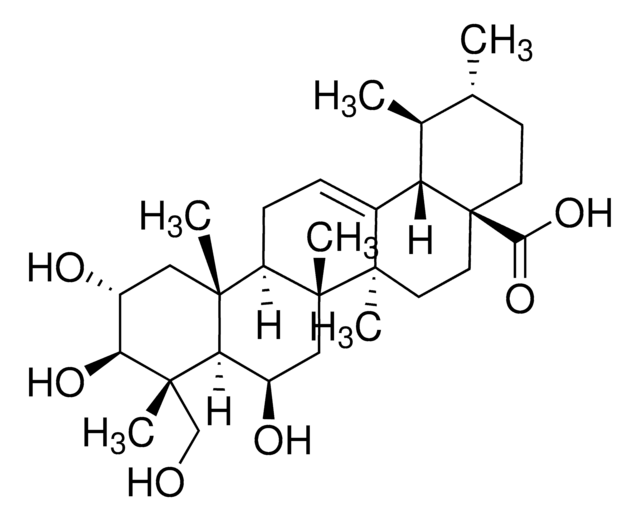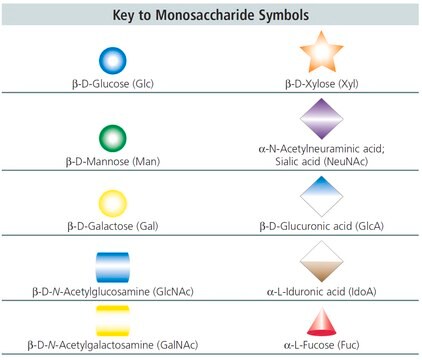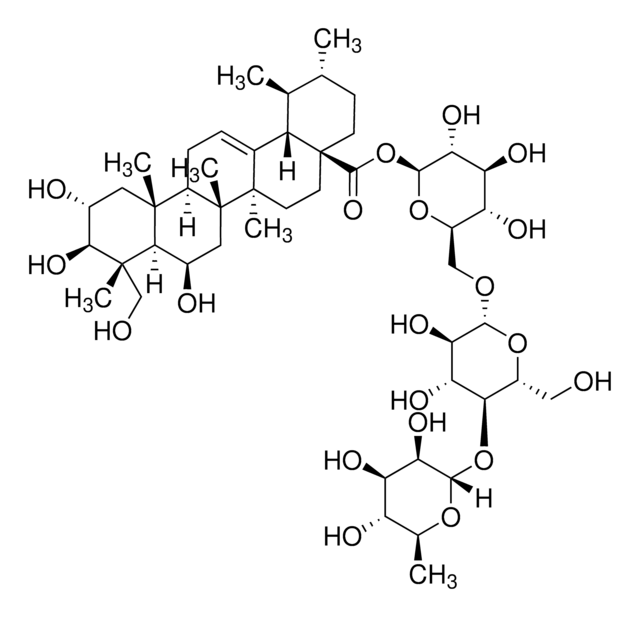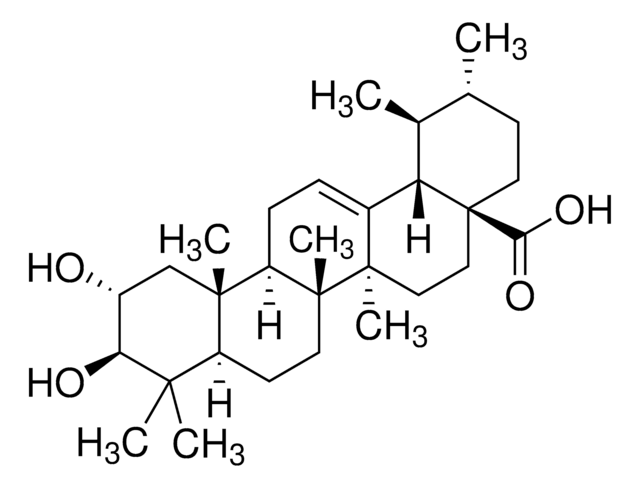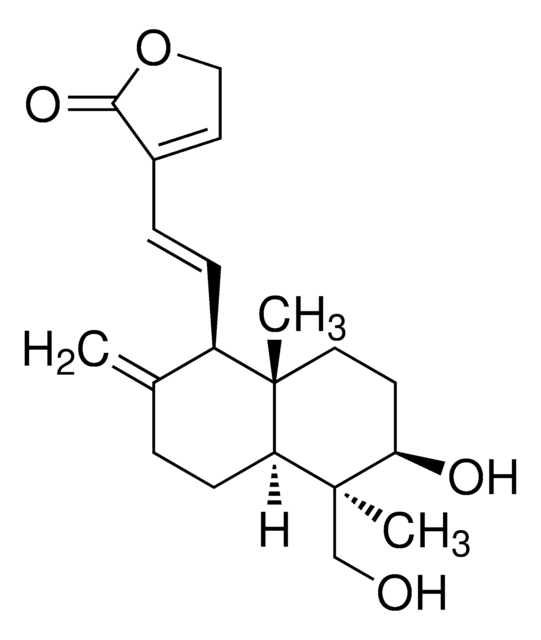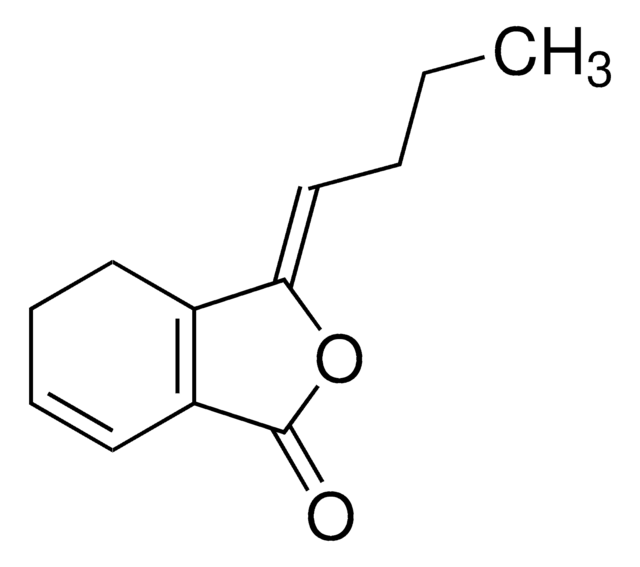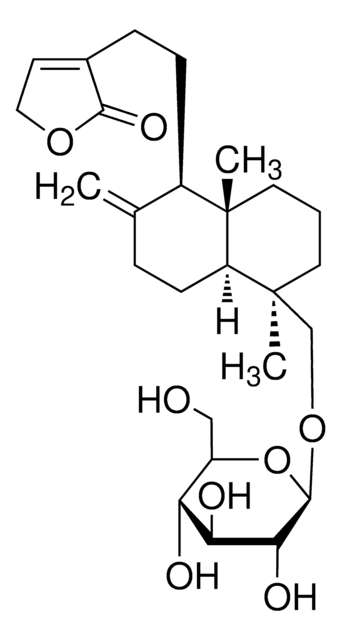Kluczowe dokumenty
M6949
Madecassoside from Centella asiatica
≥95% (HPLC)
Synonim(y):
Madecassoside, Asiaticoside A, Redermic
About This Item
Polecane produkty
Próba
≥95% (HPLC)
Formularz
powder
kolor
white to off-white
rozpuszczalność
H2O: 1 mg/mL, clear, colorless
Zastosowanie
metabolomics
vitamins, nutraceuticals, and natural products
temp. przechowywania
2-8°C
ciąg SMILES
O1C(C(C(C(C1C)O)O)O)OC2C(OC(C(C2O)O)OCC3OC(C(C(C3O)O)O)OC(=O)C54C(C(C(CC5)C)C)C6=CCC7C8(C(C(CC7(C6(CC4)C)C)O)C(C(C(C8)O)O)(CO)C)C)CO
InChI
1S/C48H78O20/c1-19-10-11-48(13-12-46(6)22(28(48)20(19)2)8-9-27-44(4)14-24(52)39(61)45(5,18-50)38(44)23(51)15-47(27,46)7)43(62)68-42-35(59)32(56)30(54)26(66-42)17-63-40-36(60)33(57)37(25(16-49)65-40)67-41-34(58)31(55)29(53)21(3)64-41/h8,19-21,23-42,49-61H,9-18H2,1-7H3
Klucz InChI
BNMGUJRJUUDLHW-UHFFFAOYSA-N
Szukasz podobnych produktów? Odwiedź Przewodnik dotyczący porównywania produktów
Powiązane kategorie
Opis ogólny
Zastosowanie
Działania biochem./fizjol.
Kod klasy składowania
11 - Combustible Solids
Klasa zagrożenia wodnego (WGK)
WGK 3
Temperatura zapłonu (°F)
Not applicable
Temperatura zapłonu (°C)
Not applicable
Wybierz jedną z najnowszych wersji:
Masz już ten produkt?
Dokumenty związane z niedawno zakupionymi produktami zostały zamieszczone w Bibliotece dokumentów.
Klienci oglądali również te produkty
Nasz zespół naukowców ma doświadczenie we wszystkich obszarach badań, w tym w naukach przyrodniczych, materiałoznawstwie, syntezie chemicznej, chromatografii, analityce i wielu innych dziedzinach.
Skontaktuj się z zespołem ds. pomocy technicznej
